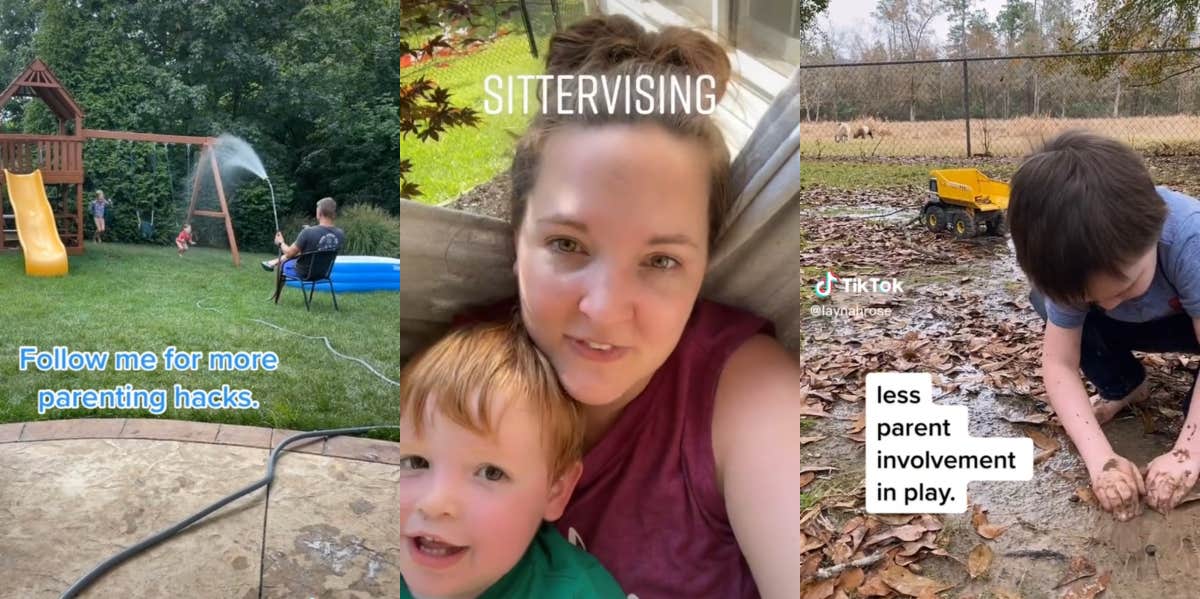Moms Are Using 'Sittervising' As A Way To Ditch Playing With Their Kids & Embrace Relaxation
Sittervising is all the rage for smart parenting.
 TikTok
TikTok Parents on TikTok have recently hopped onto a new trend that has been making its way through parenting circles with a concept as old as time but recently achieved a unique name.
Thanks to the neverending desire for individuality and uniqueness, parents are now using this label to separate themselves from their peers who dedicate their time to actively participating in their children’s play times.
What is sittervising?
‘Sittervising’ is a term that literally means you’re “sitting” and “supervising” at the same time.
Although search results are dated as far back as 2021, the term seems to have been popularized by Seattle-based mom Susie Allison in 2022, who writes on her personal blog titled, “Busy Toddler,” helping parents solve problems that they have when it comes to parenting.
Her blog post titled “Why you’ll find me sittervising” from August 10, 2022, explains the definition of the term and describes some of the benefits that come from the technique not just for the parents, but for the children as well.
“In reality, sittervising is steeped in child development research, best practices, and a deep knowledge of pedagogy,” Allison claims. “The very basis of sittervising is to remove the adult from directly interacting (and sometimes interfering) with the child’s play or activity — because kids need play experiences without adults.”
Sittervising means parents sit and supervise while kids play, instead of playing with them.
Allison claims that participating in play with your children actually alters the way they do it.
Parents, normally, are fully developed human beings with adequate problem-solving skills, so when they enter a world of child’s play, they are capable of solving problems before they would even arise in order to keep the child satisfied.
This, however, is precisely the problem, Allison puts it.
Children are missing out on key developmental milestones by having all of their problems solved for them instead of learning how to problem-solve on their own.
“Parents playing and hovering interferes with necessary and critical opportunities for a child to develop skills,” she claims. “In sittervising, the distance between parent and child takes on a whole new meaning and importance.”
Sittervising doesn’t mean you can never play with your child again, it just means that sometimes, it’s better to take your foot off the gas and let your child play as you watch from a comfortable, seated position a safe distance away.
Sittervising also benefits the parent involved.
“In recent years, there has been a monumental shift in parenting and the expectations of what ‘good parenting’ looks like,” Allison writes. “In short, spending all free time playing with the child not only causes a potential loss of skill-building opportunities for the child but it burns the parent out.”
She claims that sometimes, sittervising isn’t even just sitting and watching your children play, but means that you have time to do other things.
“I know that in playtime without me, I’m able to get chores and jobs done to be a more present and less stressed parent to my children,” she writes.
“Sittervising, or vaccuum-vising, cook-vising, and whatever other iteration of supervising/sittervising I need to do to keep my family afloat is what I plan to do.”
No matter what other TikTok parents might try to tell you, sittervising is a valid method of parenting and is backed by many professionals.
If you’re been feeling a little burned out from playing with your kids all too often, eating up your free time, maybe try some sittervising methods.
Isaac Serna-Diez is an Assistant Editor who focuses on entertainment and news, social justice, and politics. Keep up with his rants about current events on his Twitter.
